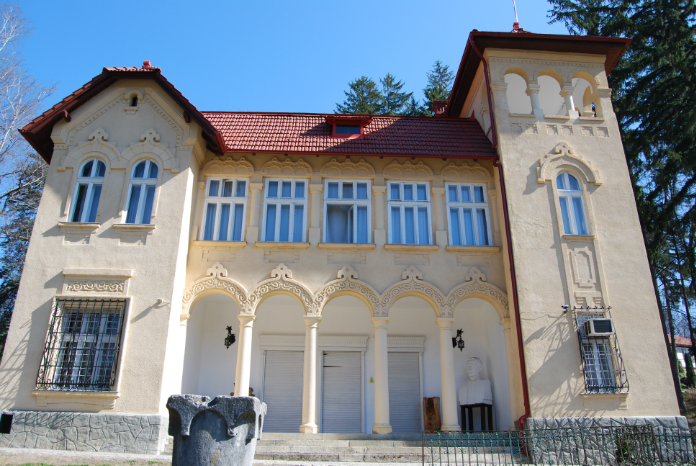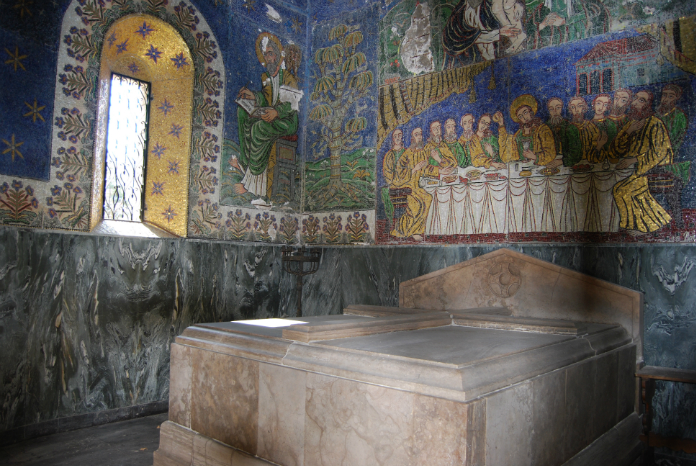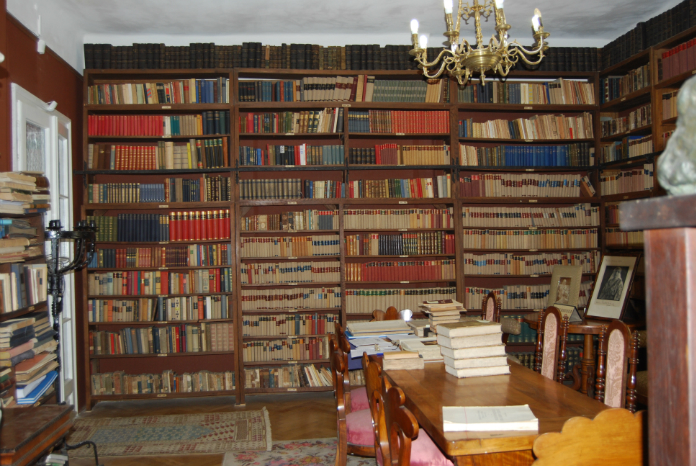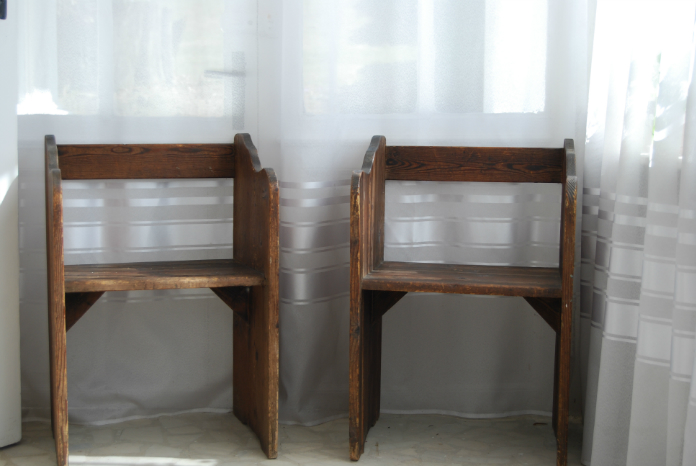The two chairs and a missed chance at the castle
TWO POETS: ADY and GOGA
The Octavio Goga museum and the Museum of Literature in Budapest have created an exhibition in Csucsa, Romania.
| Biró Annamária |
2014-04-28 18:00 |
The exhibition opened on 8 March and depicts the period Endre Ady, one of the finest Hungarian poets with an outstanding career in journalism, spent in the village. The museum complex is located on an estate formerly belonging to the Boncza family. The poet and his wife, Csinszka, lived here before they moved to Budapest.

Nevertheless, this article, instead of the exhibition itself, rather focuses on the place and its (mostly unused) potentials. The complex is somewhat perplexing since the visitor can not really find out if it is a Goga Museum, a literary exhibition, an ethnographic collection or an open air museum (including a shabby open-air theatre, a wooden church form the 16th century and a sizable mausoleum which was erected by Goga’s widow, Veturia).
The buildings are so stunningly different in terms of function and design that they immediately stimulate a degree of curiosity in the visitor. Despite the outdated infrastructure, the museum is definitely on the symbolic map of the Romanian museums. However, it is exactly the lack of concept and development that helped to preserve everything in the form Veturia Goga had left it for the Romanian state in1967.

Until his death in 1939, Octavian Goga held different offices in Romania. He was a minister for culture and also for internal affairs, which explains the still visible wealth of the castle: Turkish jewellery from the 13-14. century, Venetian objects, biedermeier furniture, as well as paintings from Goga’s contemporaries, Veturia’s piano, a huge library with several thousand items and countless of other interesting pieces without any caption or information, the only source of explanation being the keen guards in the rooms.

In contrast with this, the Ady exhibition lacks this abundance of objects, although Katalin Hegyi, the curator of the exhibition, added a lot of devices to help enhance visitor experience. The entire photo collection is also screened on TV sets, and Ady’s poems in Hungarian and Romanian can be listened to in an old telephone receiver. The real challenge for the curator was that Ady and Csinszka hardly left behind anything when they moved to Budapest and what remained was looted by the villagers suffering under WWI.

At first glance, the time Ady spent in Csucsa is far from being decisive either in his career or in his poetry, at that time his biggest concern was how to hide his alcoholism from his wife. In spite of this deprived context, the exhibition attempts to attribute a new meaning to these months in Csucsa. It sketches the circle of friends who used to frequent the house in those days and also displays the poems which were written here. And most importantly, it makes many of Ady’s poems available in Romanian via audio and visual aids.
Analysing and depicting the relationship between Ady and Goga would be a great opportunity to talk about the conflict-ridden relationship between Hungary and Romania. And if that happened, Csucsa, for many on both sides, could become an attractive place where ethnic differences and conflicts are addressed. Interestingly, the museum’s website is trying to take this approach, but, at the moment, no echo of that can be detected among the walls of the Csucsa castle.
In the beginning Ady and Goga had fundamental arguments about Hungarian literature, later their relationship toned down into a friendship. Eventually, as Goga was drifting towards the right wing and even political extremism, Ady was not able to tolerate his political views, although he never doubted that Goga was led by concerns for his nation.
Literature on their relationship is in abundance, although judgements often still seem to be ideological. The purchase of the castle, for that matter, has several interpretations too. Csinszka is believed to have offered the castle to Goga, who paid considerably more than the old, rundown building was actually worth. He rebuilt it and moved in leading several scholars to the conclusion that the act was a triumphant revenge on Ady. Interpretation is one thing and deeds are another: Goga sent supporting letters to Ady commemorations after the death of his Hungarian friend, and saved Ady’s parents from losing their estate due to the new property law. Nevertheless, the exhibition does not touch upon such controversies. In one of the rooms there are two chairs implying that Ady and Goga were once sitting there discussing matters heatedly. In fact they never met in the castle.

The existence of this exhibition in Csucsa is remarkable, although reconsidering the concept of the museum complex and discovering the deeper layers of the former inhabitants’ world would create a more meaningful and contextualised story for the visitors.